BAMPTON THEN AND NOW
For better or worse?
This antique map of Bampton and the surrounds shows the direction of Chimney Meadows. Circa: 1797
Chimney Meadows


This antique map of Bampton and the surrounds shows the direction of Chimney Meadows. Circa: 1797


The bird’s tail makes up more than half of its length. Its dome-shaped nest is constructed from moss, lichen, spider’s webs and up to 2,000 feathers.
It’s name – originally spelt ‘cole’ – refers to its black head, which is broken by a distinctive white stripe through the centre of the nape. It has a preference for conifers.
In the 2021 RSPB Big Garden Birdwatch the Blue Tit was the second most recorded species, with a ten per cent increase since 1979.
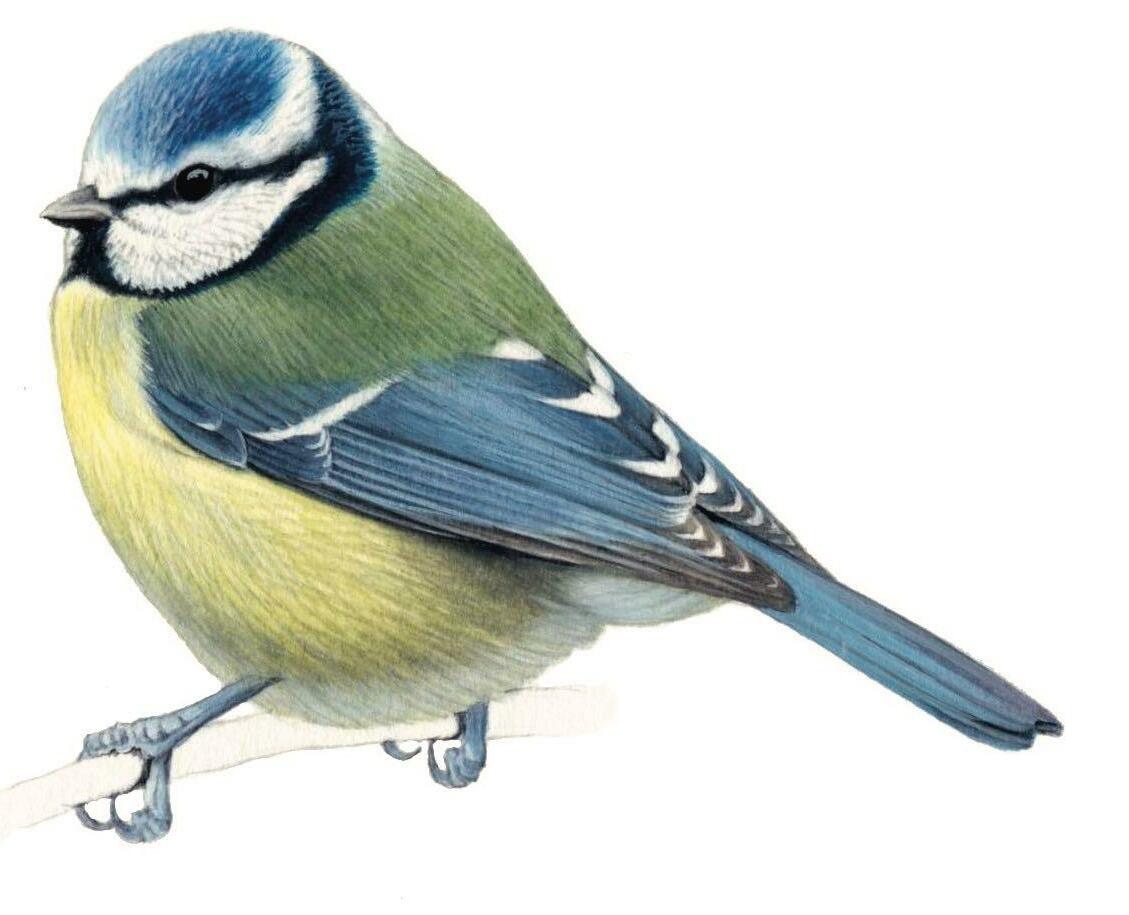
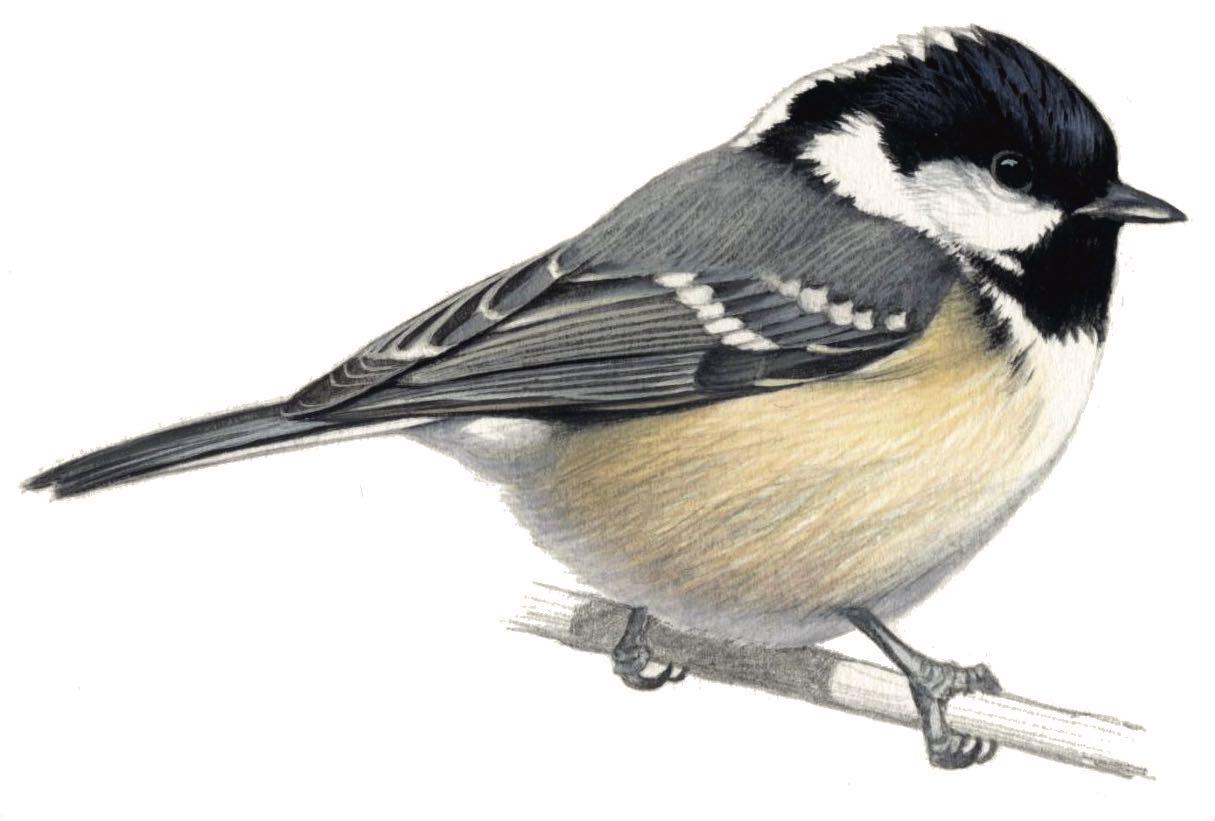

Britain's population of around 2 million pairs is the eighth highest in Europe. Germany has the most: an estimated 8 million pairs.
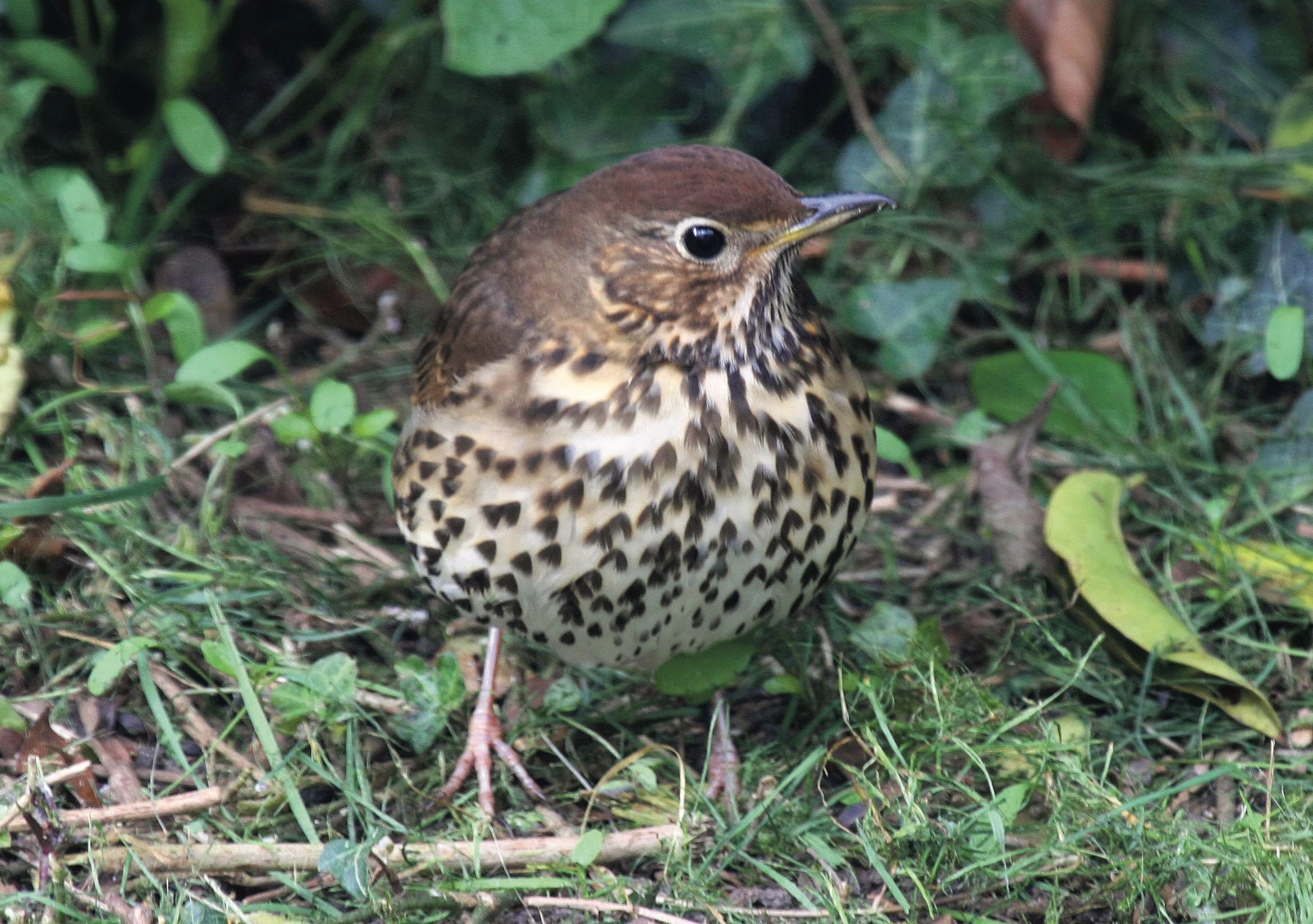
One of the few British birds to eat snails which are a critically important food in late summer when more favoured prey items are not available. Song thrush eggs are always sky-blue with black spots.

Country names for the bird include Stormcock, because the Mistle Thrush continues to sing in a storm, and Rattle Thrush, after the bird’s rattling alarm call.
It is only the female that incubates the eggs, but the male helps feed his offspring.
The majority of English blackbirds seldom move any distance from where they were hatched.
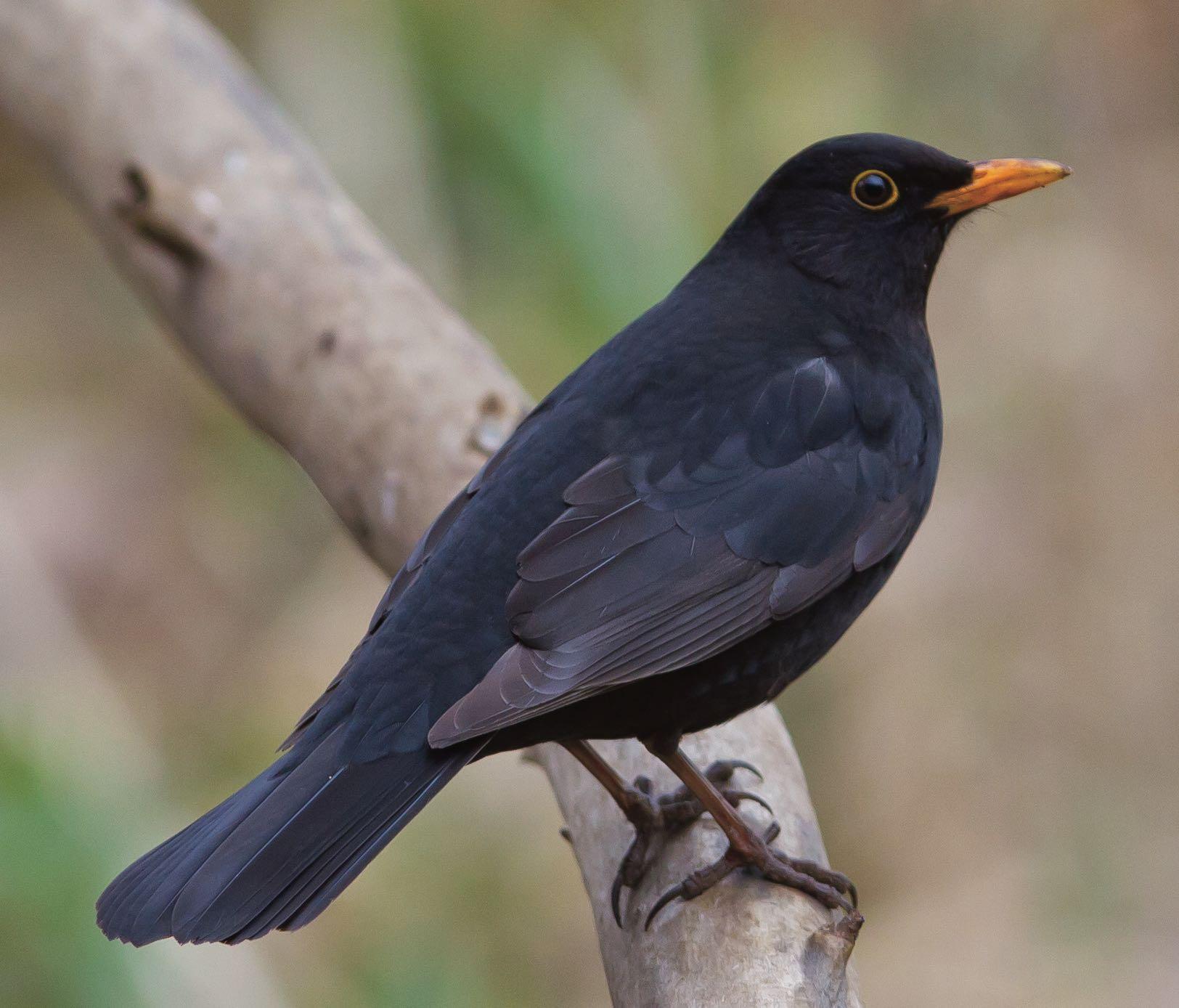
For a long time the Robin was thought to be only the male bird, and the Wren was thought to be the female, but in fact the sexes are so alike that it’s impossible to tell them apart. Their sweet song, heard almost all year round, is a statement to other Robins: “Keep away, this is my territory!”

Upon leaving the nest and for the summer months, young Robins don’t resemble their parents at all. Their red breasts only begin to develop with the onset of autumn.

Greenfinches are sociable birds, and often feed in company with other groundforaging species, including Tree Sparrows, Linnets, Yellowhammers and Reed Buntings. The song flight of the male is distinctive: he flies with slow deep wing beats, singing continuously.
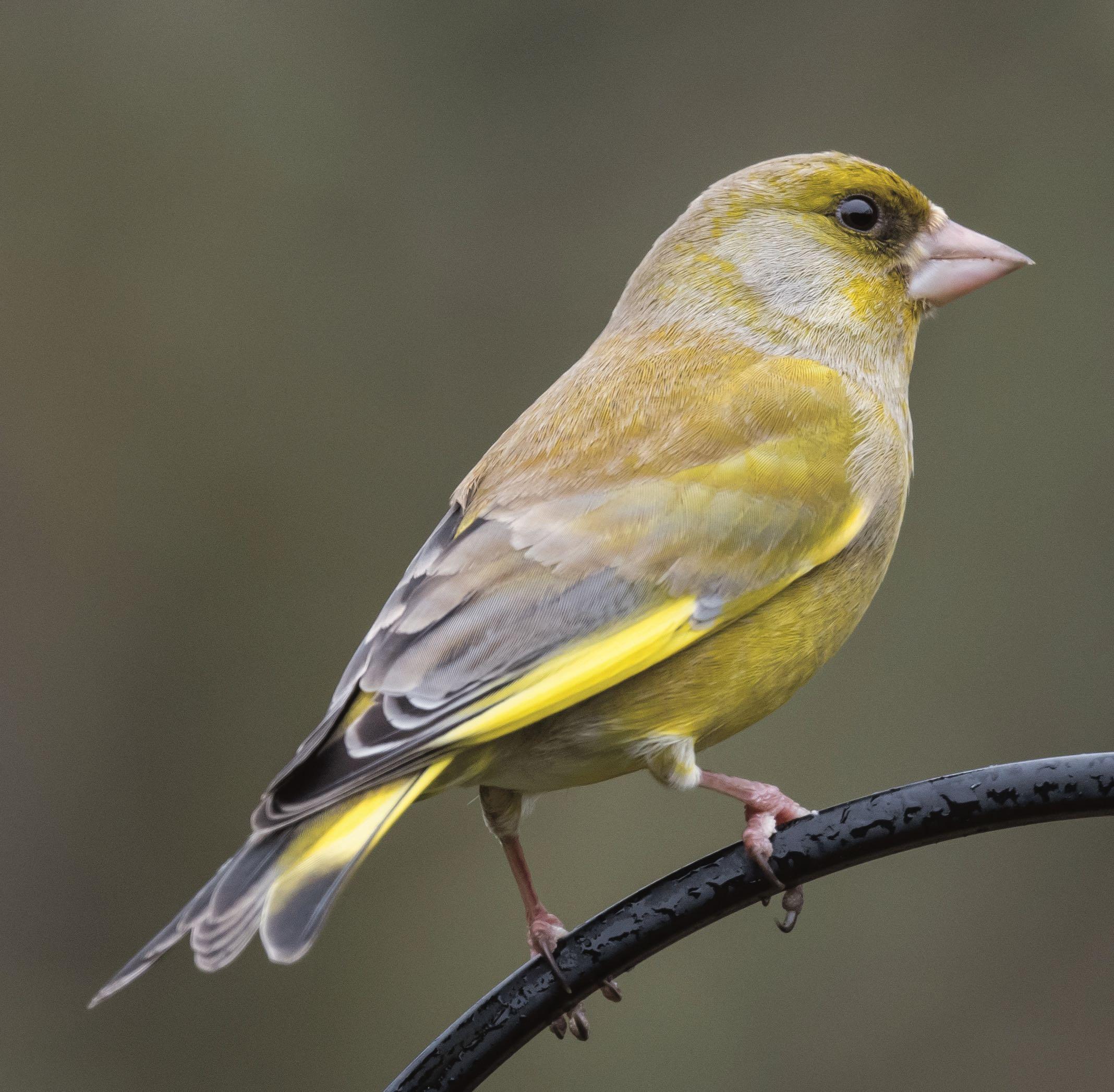
The popularity of Goldfinches as a cage bird in Victorian Britain led to huge numbers being trapped to supply demand, causing the population to crash. Halting the decline was an early priority for the Society for the Protection of Birds, later to become the RSPB.

Due to their bud-eating habits, many thousands of Bullfinches used to be legally trapped and killed each year in English orchards. The buds of cherry and pear trees are still a popular food source today.
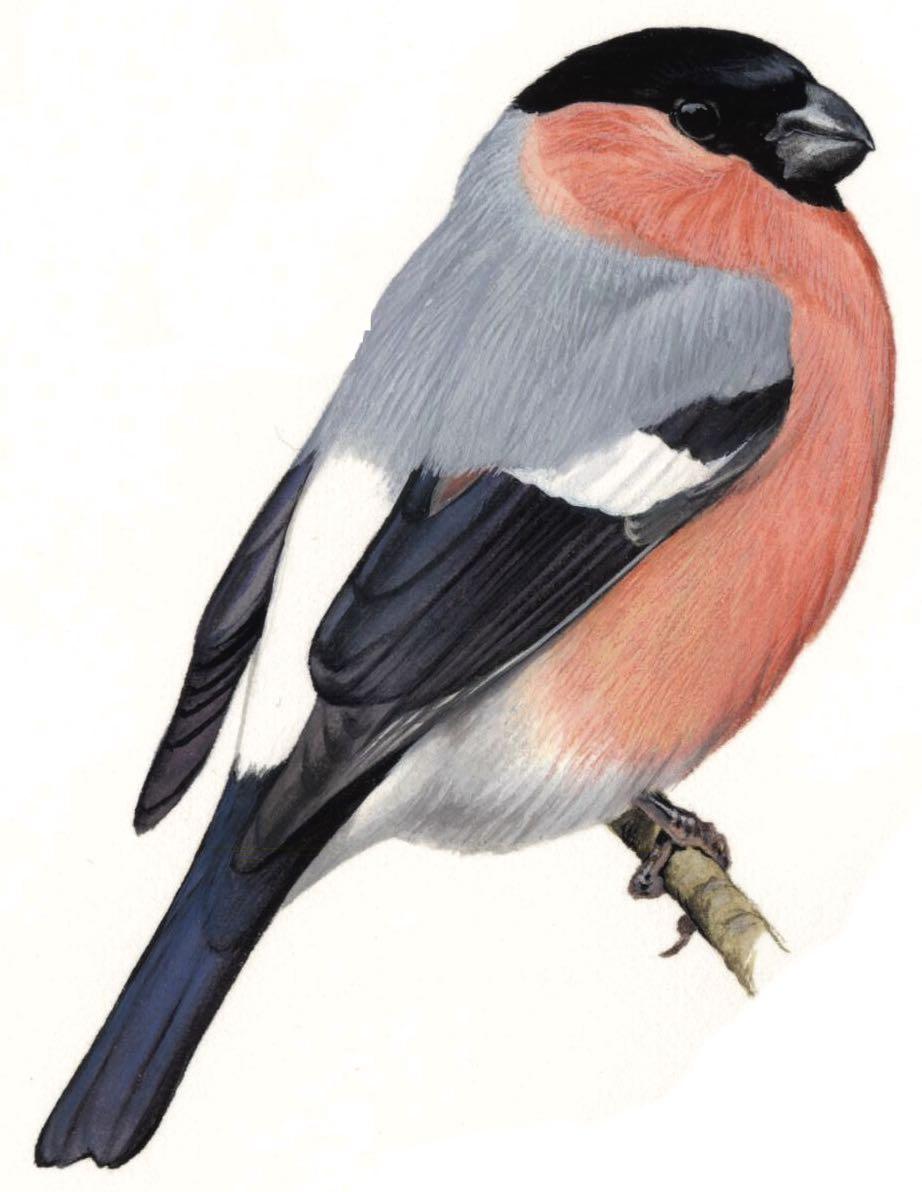
In winter all-male Chaffinch flocks are not unusual, giving rise to another old country name of bachelor bird, and winter migrants from Scandinavia boost Britain's Chaffinch population.
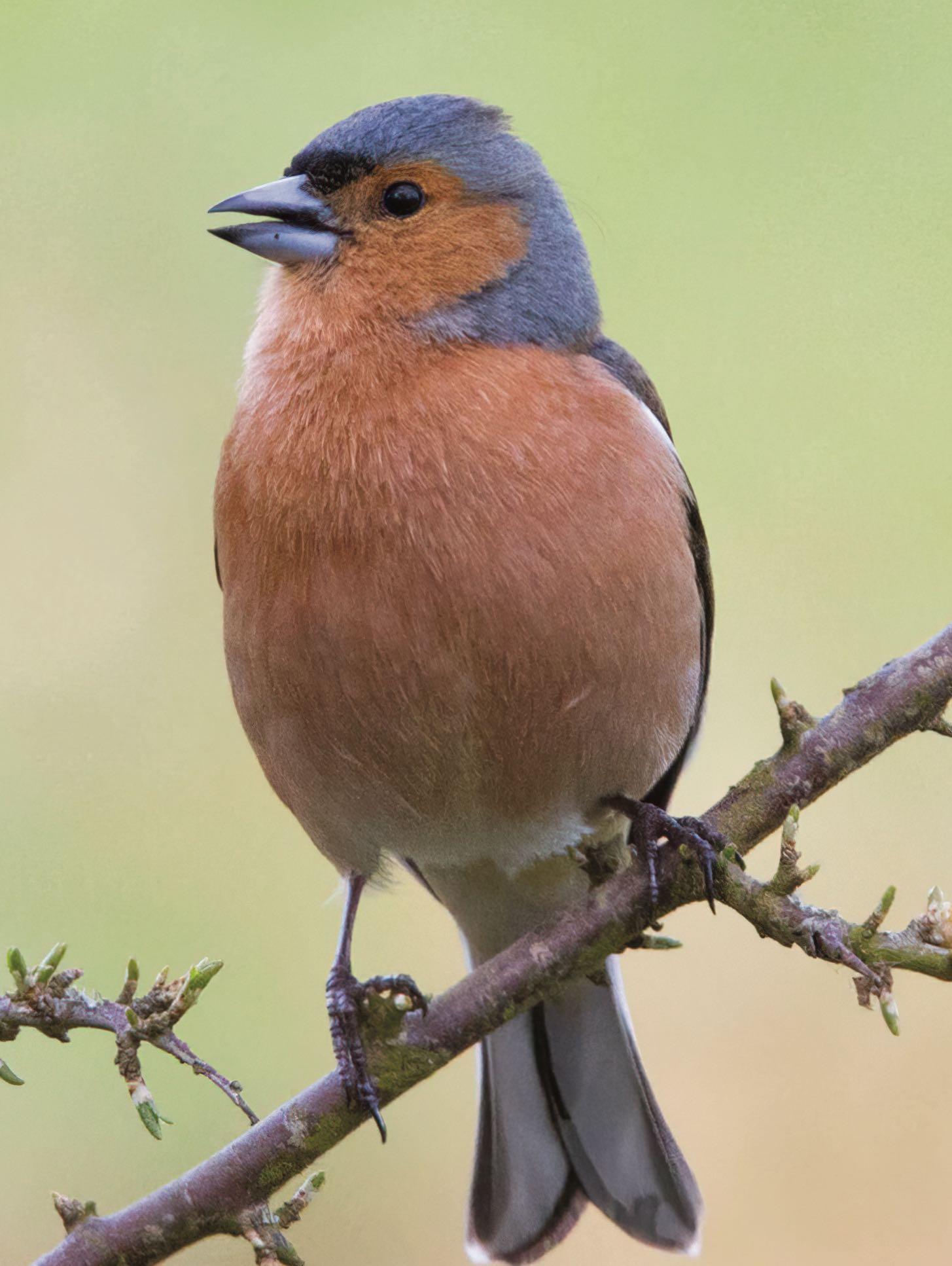
Historically, swifts nested in holes high in large trees. They still do so in old Scots pines in Abernethy Forest in Scotland. Today almost all swifts nest in colonies under the eaves of old buildings.


Around 86% of House Martins nesting in Britain attempt to rear two broods. Young from the first brood have often been observed helping their parents feed the next brood, an unusual occurrence in birds.

Before the mysteries of migration were understood, it was thought that swallows spent the winter buried in the mud of ponds and lakes. In fact European swallows mostly winter in Africa south of the Sahara.
 Swift
Swift
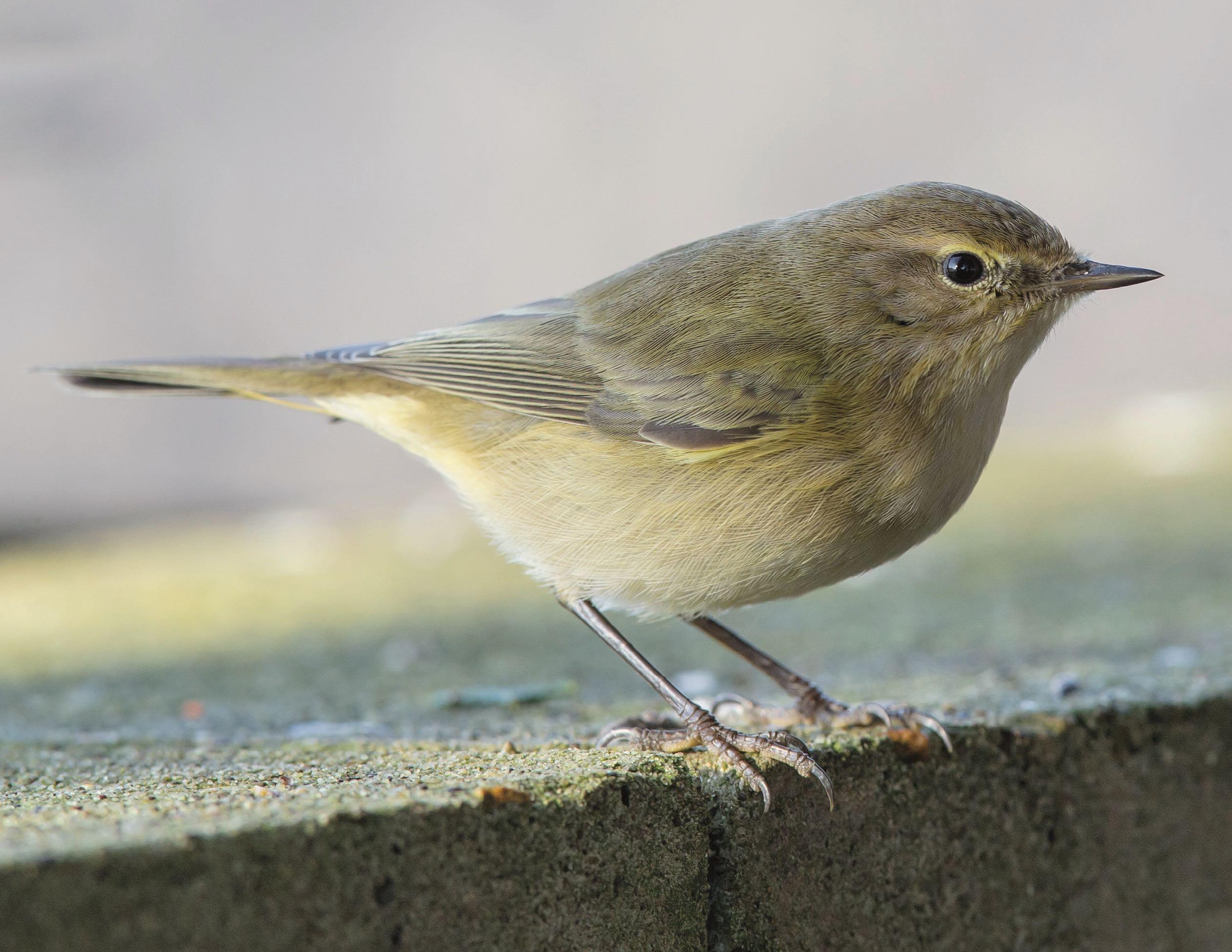
Occasionally the Chiffchaff cross-breeds with the very similarlooking Willow Warbler, and the offspring will sing a combination of both bird’s songs.
As if it’s not confusing enough!

Willow Warblers are now commoner in northern Britain than in the south. They arrive here usually a couple of weeks after the Chiffchaff, at the end of March or in early April.
In Autumn the Lesser Whitethroat migrates via Italy, taking an eastern route south across the Mediterranean. It fattens up for the journey en route, which is when it is most likely to be found anywhere, including, if you’re lucky, in your garden.

Due to the beauty of its song the Blackcap earned the ancient names Mock Nightingale, Northern Nightingale and King of the Warblers.
(Female Blackcap pictured)
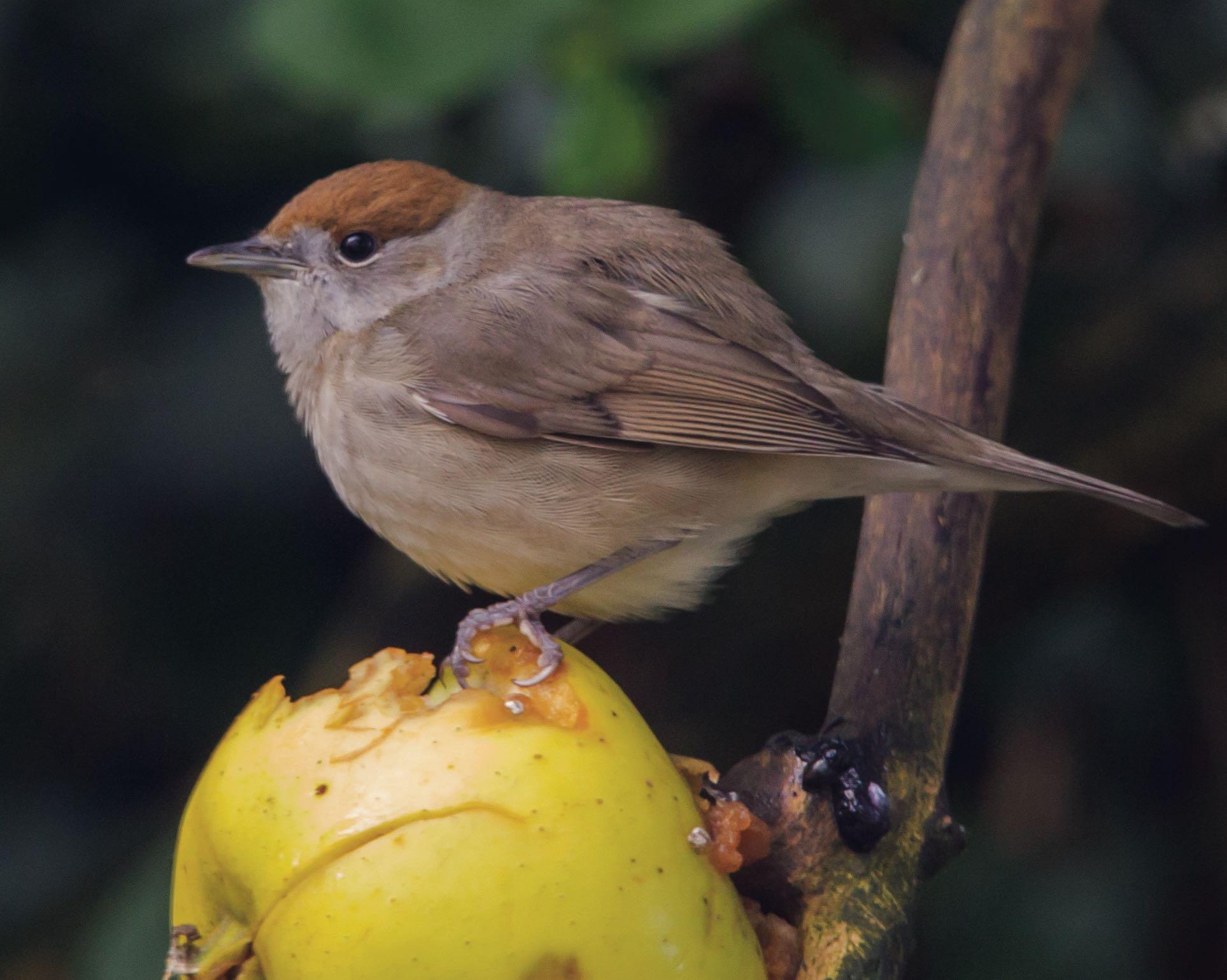
On the Continent the White Wagtail replaces the Pied Wagtail. It is a race of the same species, and has a pale grey rather than black back. In London, Buckingham Palace plays host to a Pied Wagtail roost.

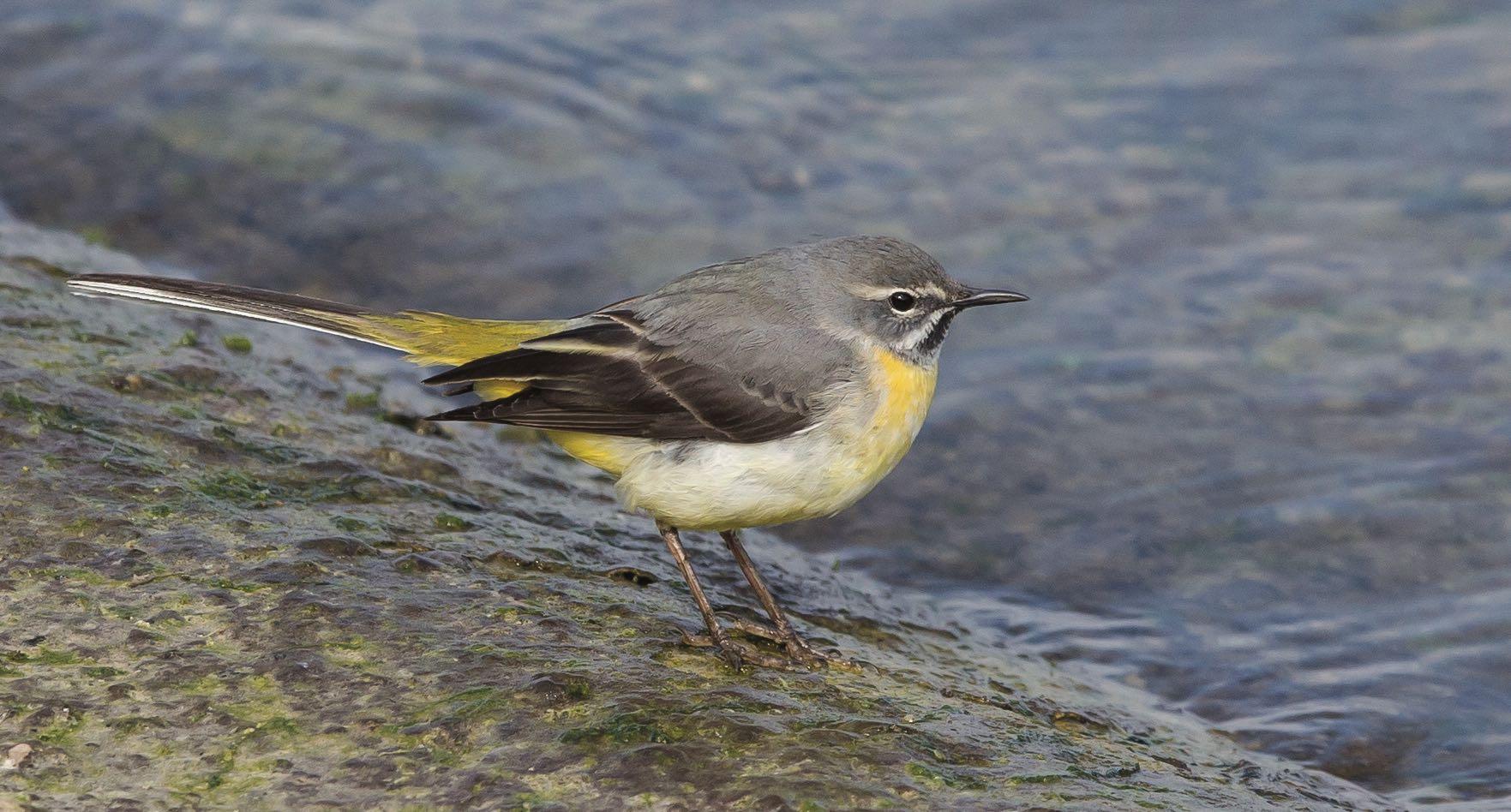
Although spending most of the breeding season around water, the Grey Wagtail ventures further in winter and can be seen in a variety of habitats, including farmyards and garden lawns. Its tail is the longest of all our wagtails.
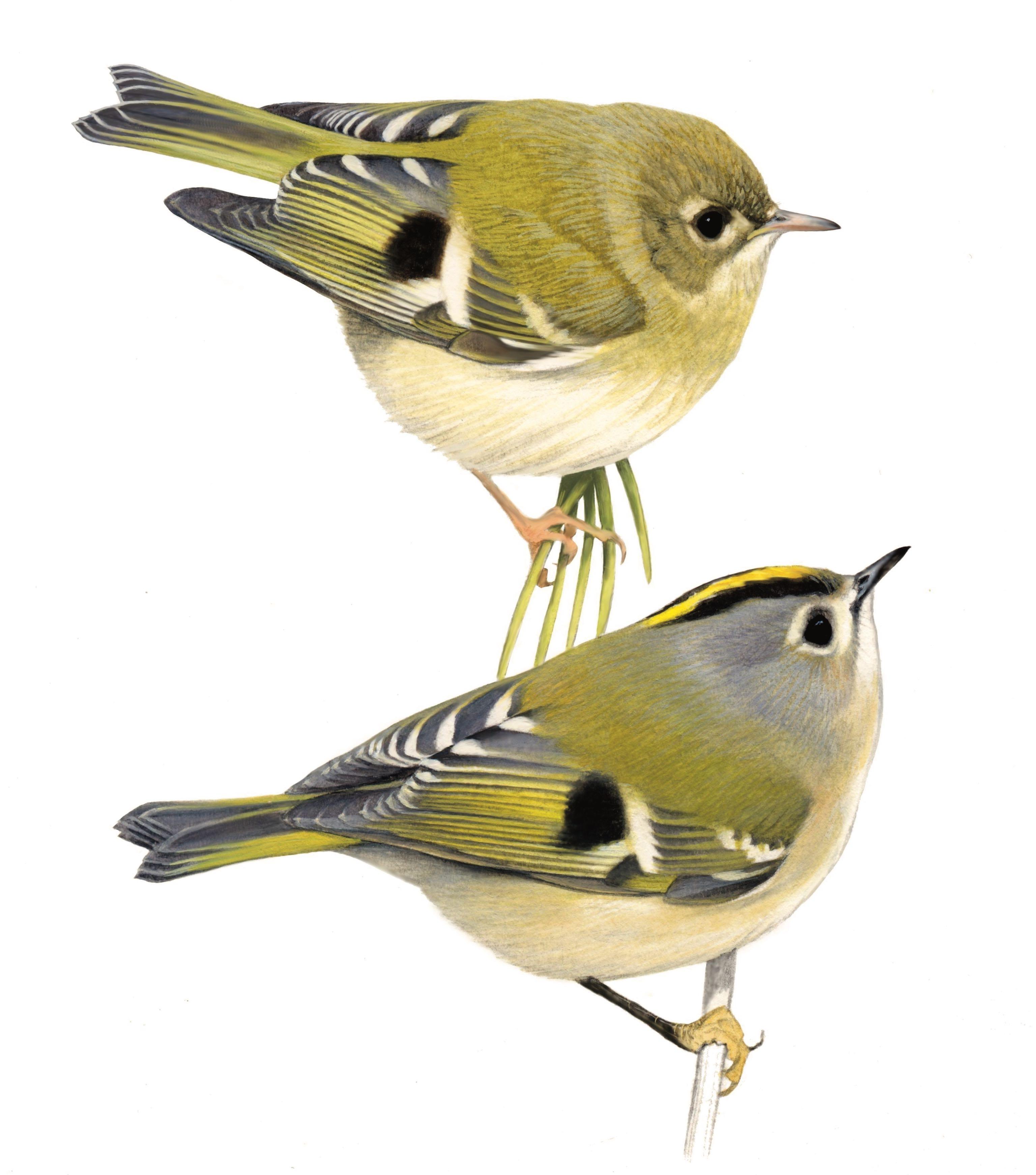
Despite their tiny size, Goldcrests are highly migratory, with large numbers of birds from Scandinavia and the near-Continent arriving on the east coast of Britain every autumn. Early ornithologists believed they rode on the backs of migratory Woodcock or Short-eared Owls!
The Dunnock is one of Britain’s most promiscuous birds. Females often mate with up to three different males in quick succession, and the by doing the same thing, male birds attempt to ensure their genes are propagated. It’s the quiet ones that are the worst!


There can be anything from 160 to over 460 syllables in the Skylark’s song. Most birds sing from a height of around 50 metres and few ever go beyond 200 metres high.
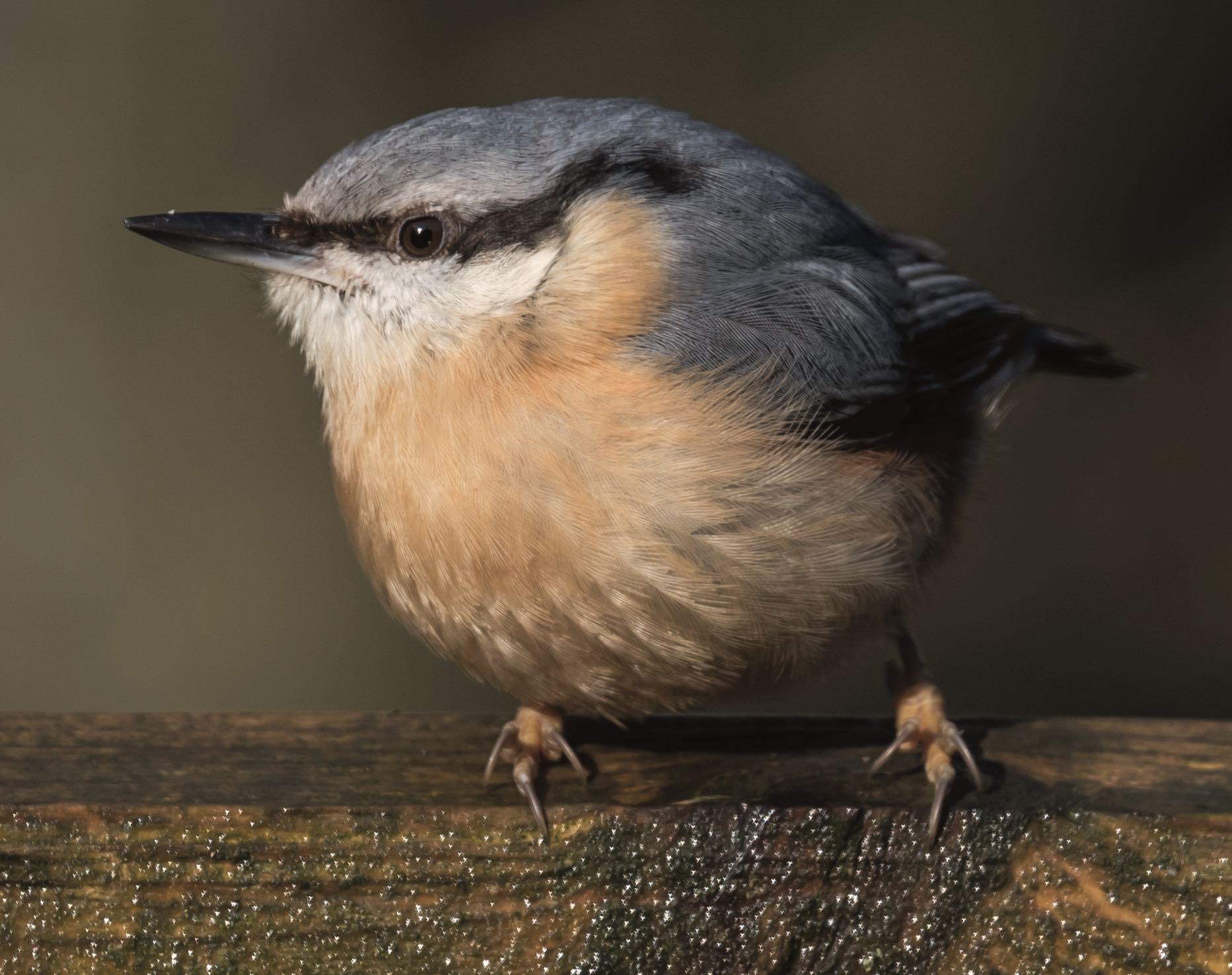
The favourite nest site for a Nuthatch is the old nest hole of a Great Spotted Woodpecker. Old country names include mud dabbler and mud stopper, denoting the bird's unusual habit of plastering mud around the entrance hole to its nest.
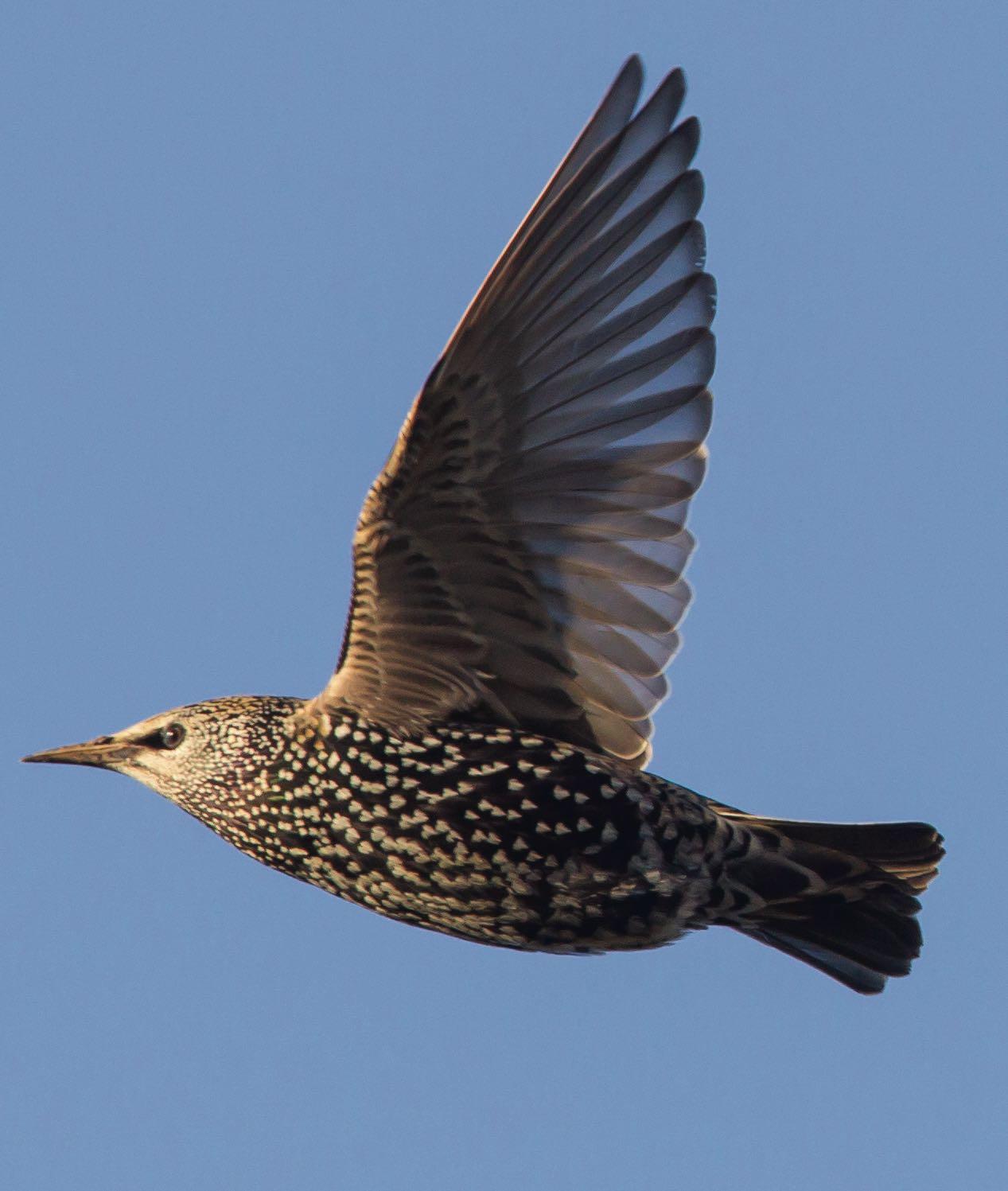
Not only are Starlings great singers, they are also impressive mimics, able to imitate the calls or songs of other birds, and even mechanical sounds. Winter Starling roosts can hold anything from a few hundred to several million birds.
Treecreepers always go up trees, never down. When they get to the top they fly to the bottom of the next tree. The tail is an invaluable aid to the bird’s tree climbing. The 12 tail feathers are stiffened with robust shafts that project at the tip.
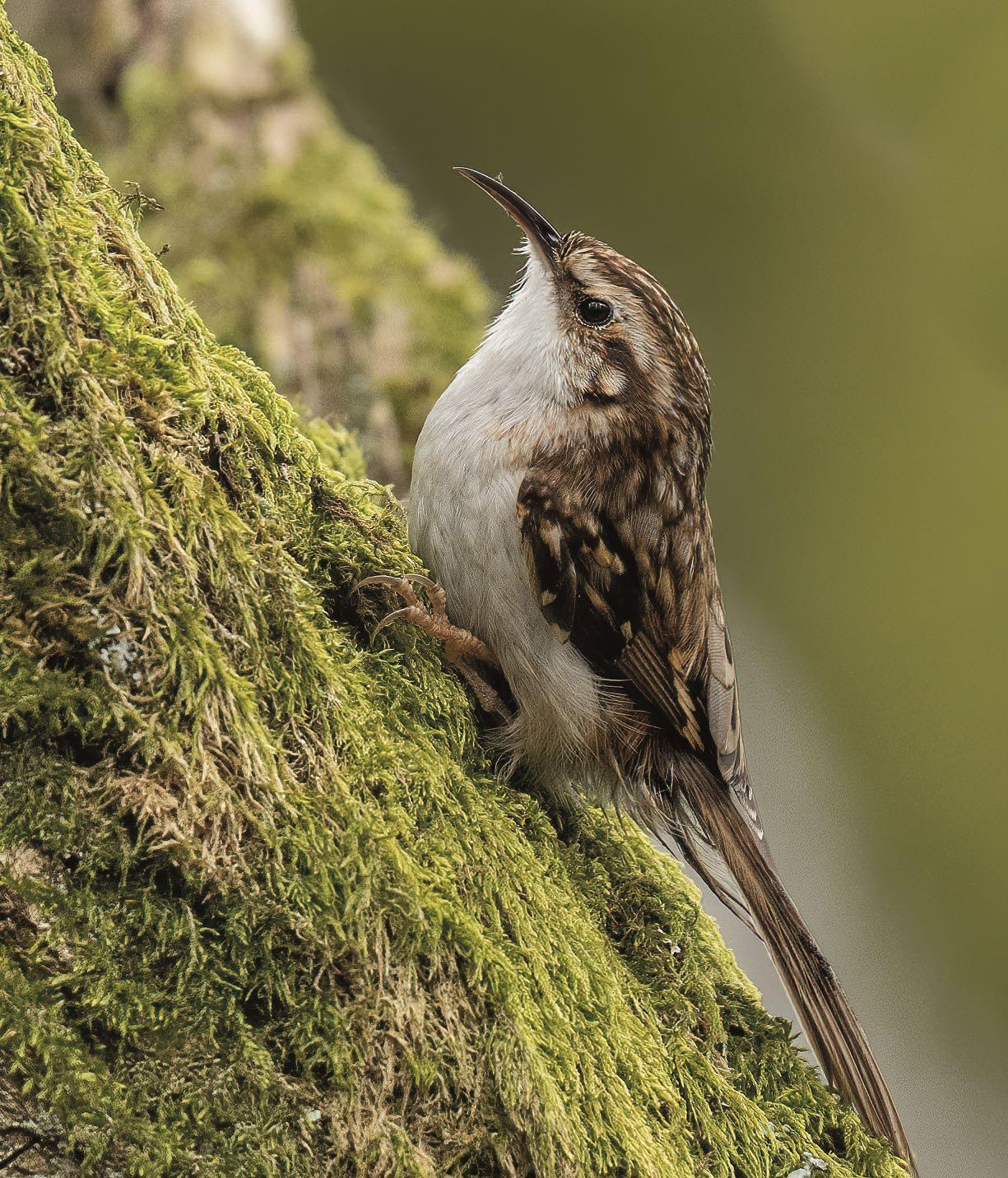
To make its drumming sound achieve the right frequency the Great Spotted Woodpecker needs to achieve a rate of 10-14 strikes per second. It has been known to drum on telegraph poles and even metal poles and weather vanes.


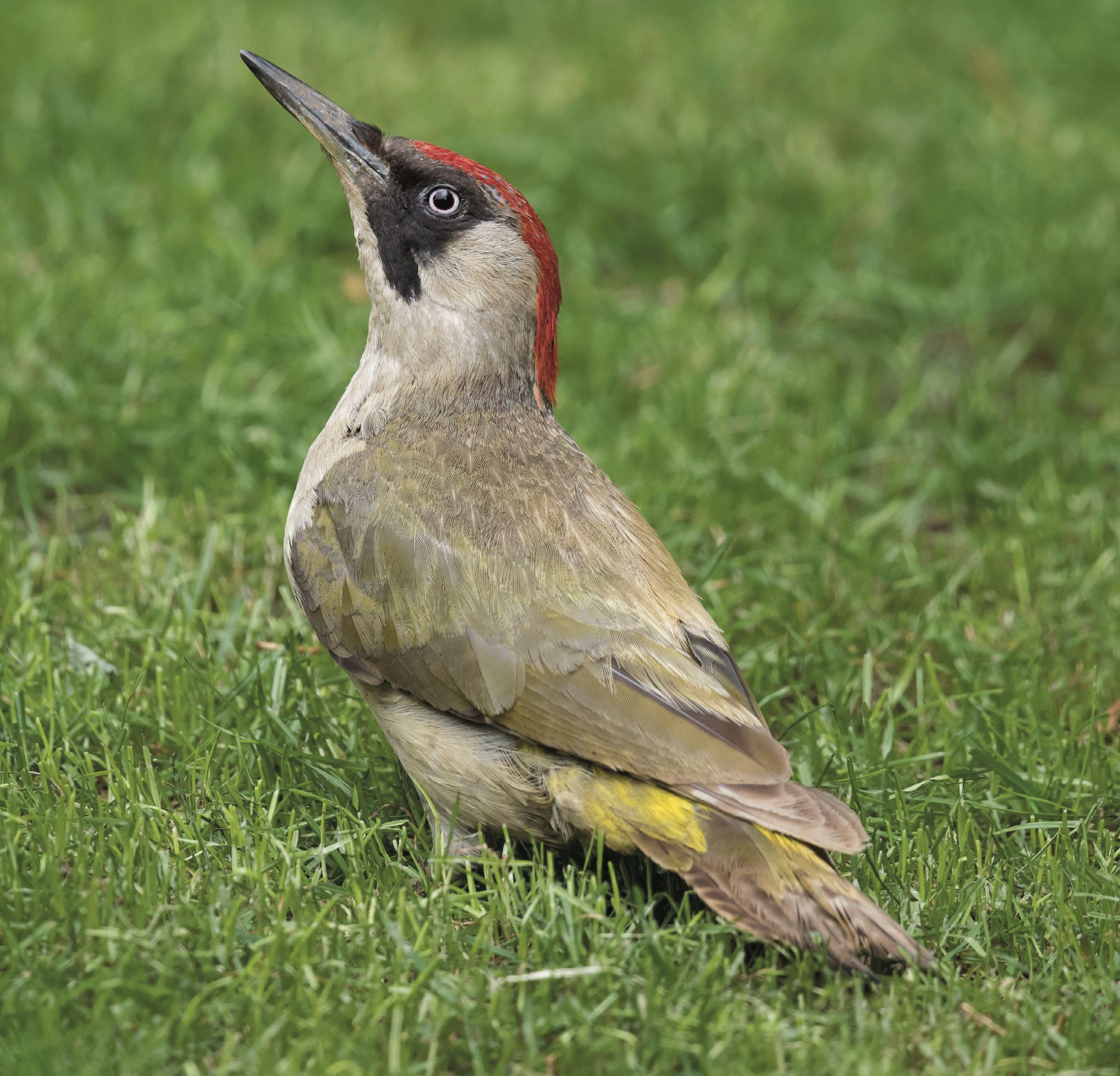
The juvenile bird is identified by its all red crown, whereas the adult male sports a red patch at the back of its head. The adult female has no red on its head. All have red markings on the underbelly.
Unlike the Great Spotted Woodpecker, the Green rarely drums. Of all our woodpeckers, the Green spends the least amount of time in trees, and can often be seen feeding on the ground.
The Wood Pigeon is by far the most numerous large wild bird in Britain, with a population estimated at around 2.5 million pairs. In winter when feeding it stuffs its crop to capacity, then digests the food overnight.
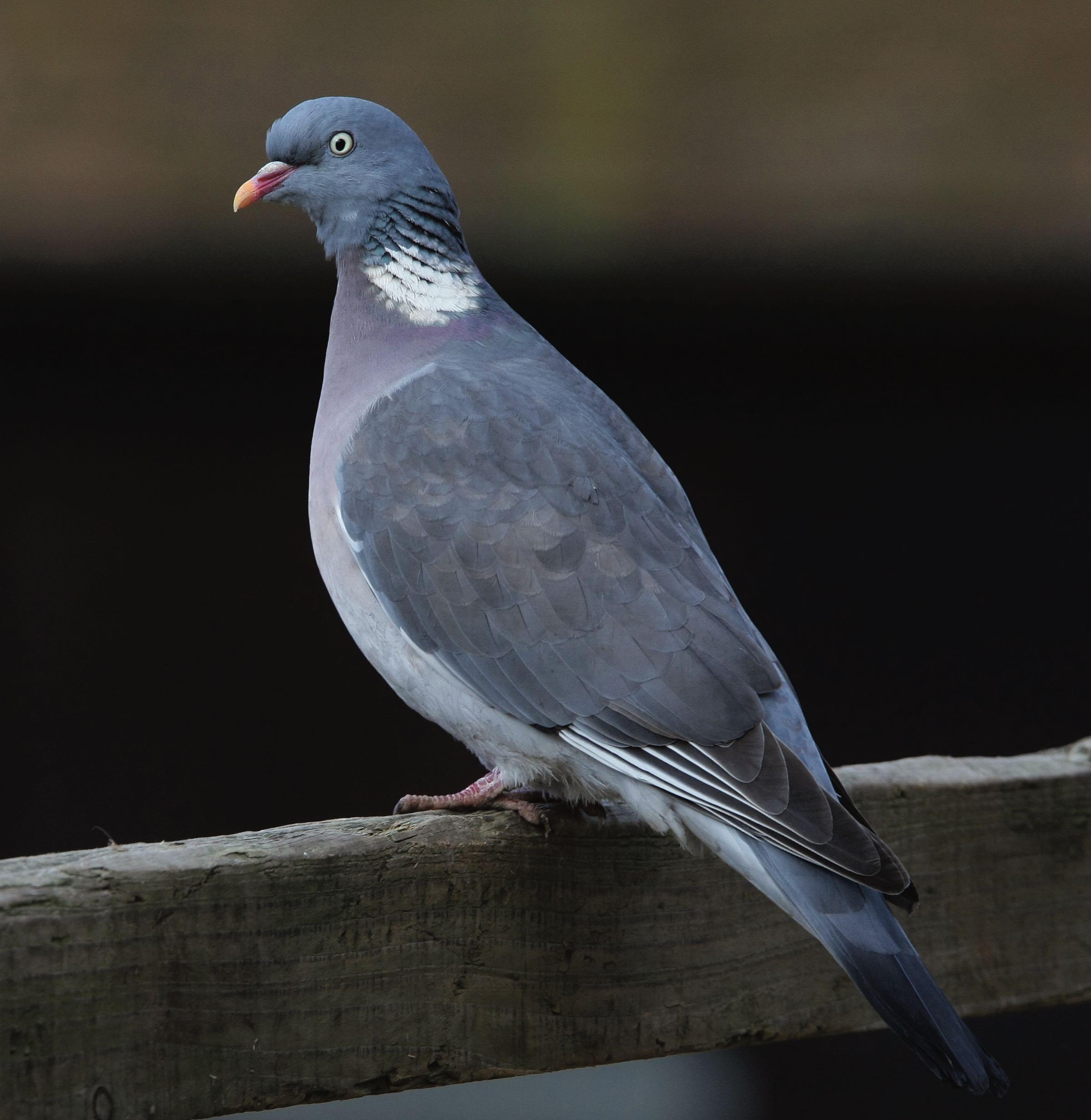
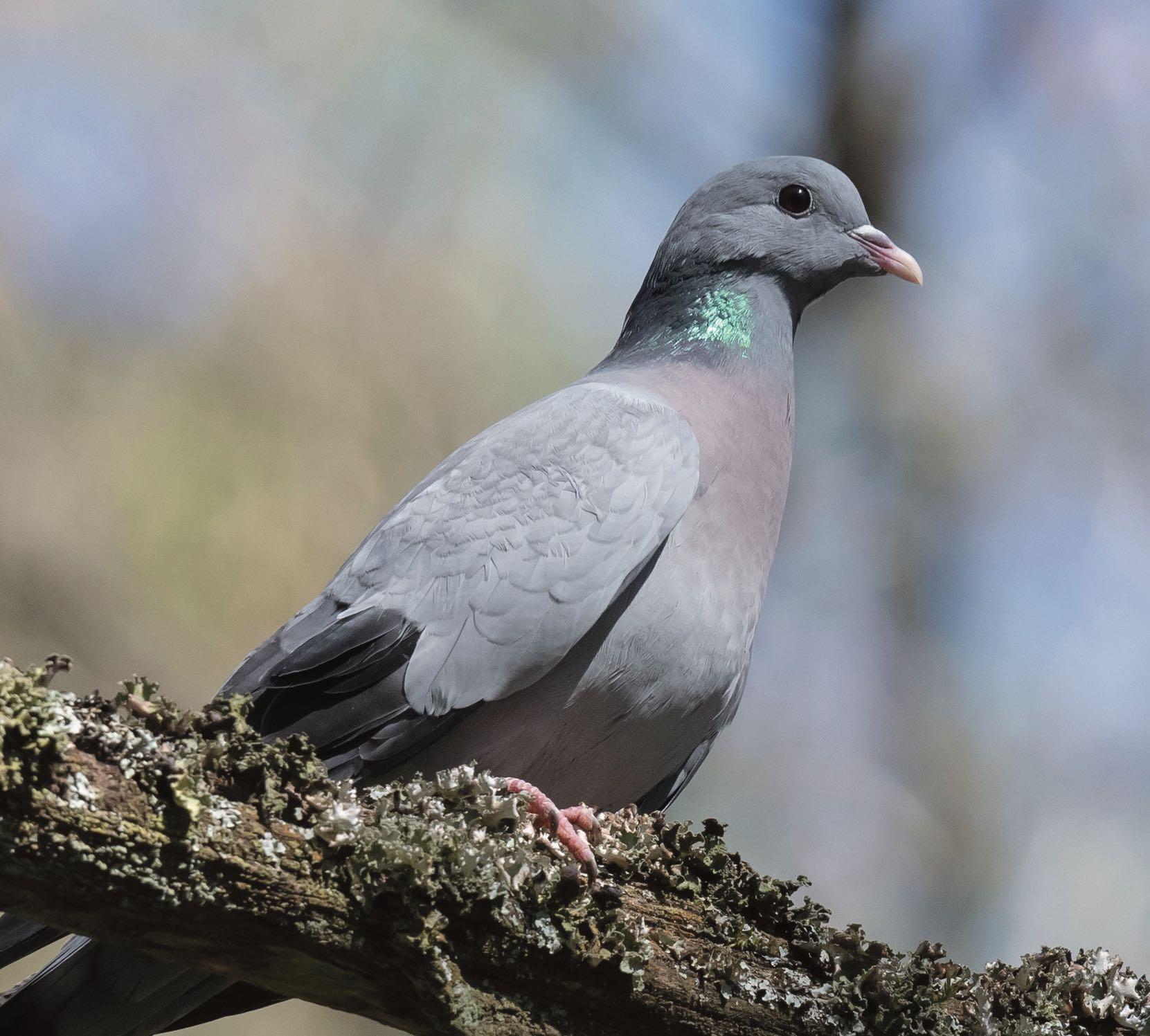
The bird’s vernacular name comes from its choice of a nest in the hole of a tree trunk. They also frequently take over nest boxes that are specially built for Barn Owls.
The Collared Dove is a prolific breeder which may explain their recent population rise. A pair may produce multiple clutches of two eggs in a year while some have been known to rear five broods within the twelve month period.
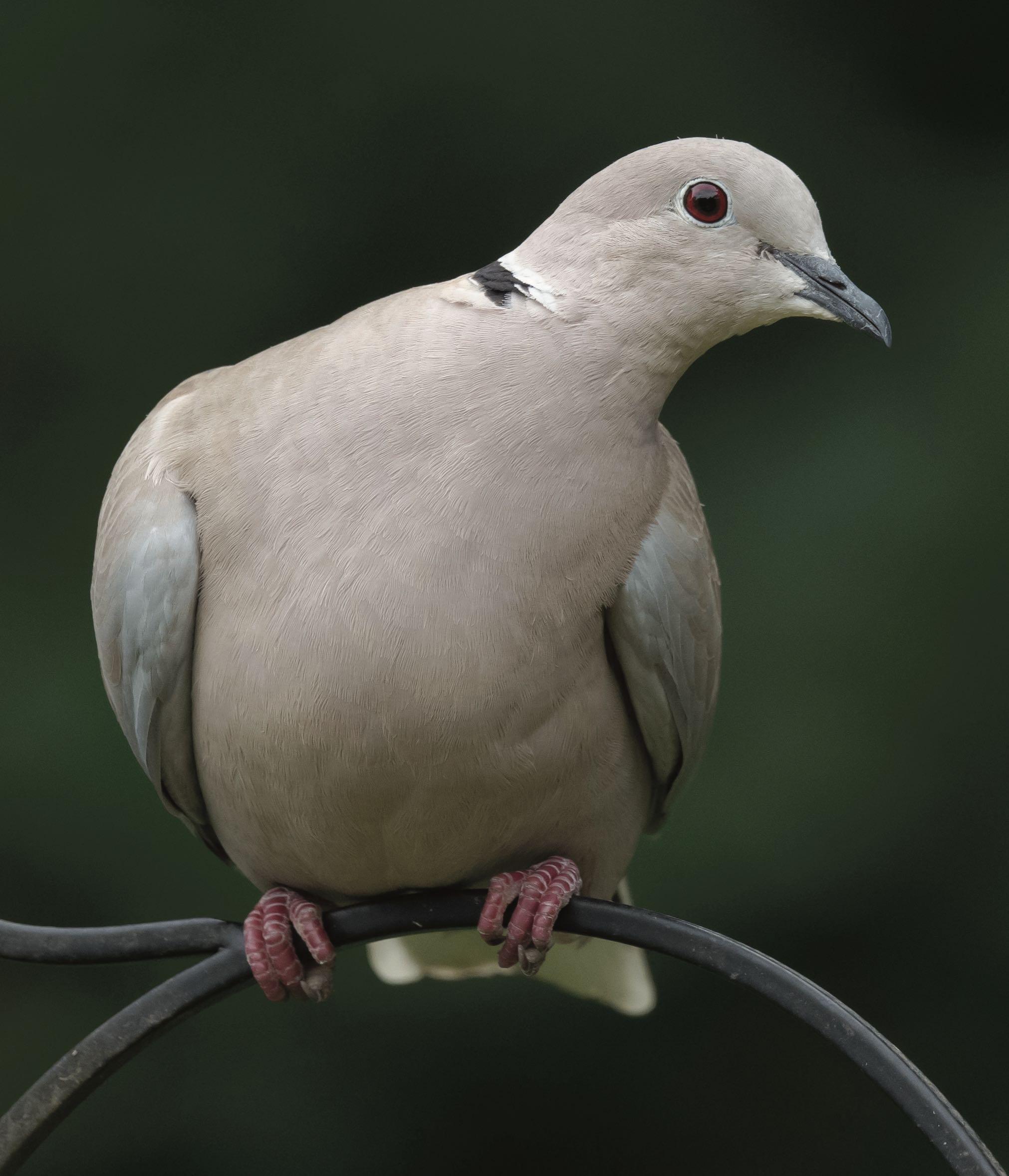

The Barn Owl is widely distributed across the globe, being found on every continent except Antarctica. They don’t hoot but the male has a distinctive shrieking call, often repeated several times.
The Little Owl is Britain’s smallest owl: it weighs a third as much as a Tawny Owl. Holes in trees are their favourite nest sites, but nest boxes are sometimes adopted.
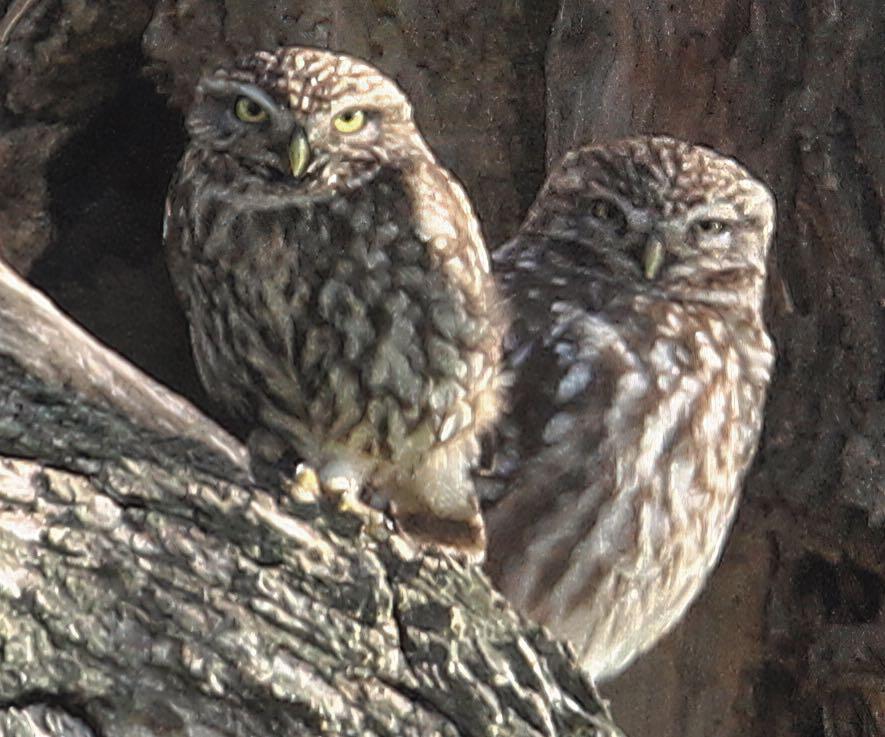
Only the male utters the drawn out hoot and it is generally believed the “Kewick” answering call is made by the Female this is not accepted by all authorities some believing that both male and female are responsible. Males will occasionally hoot during daylight hours.
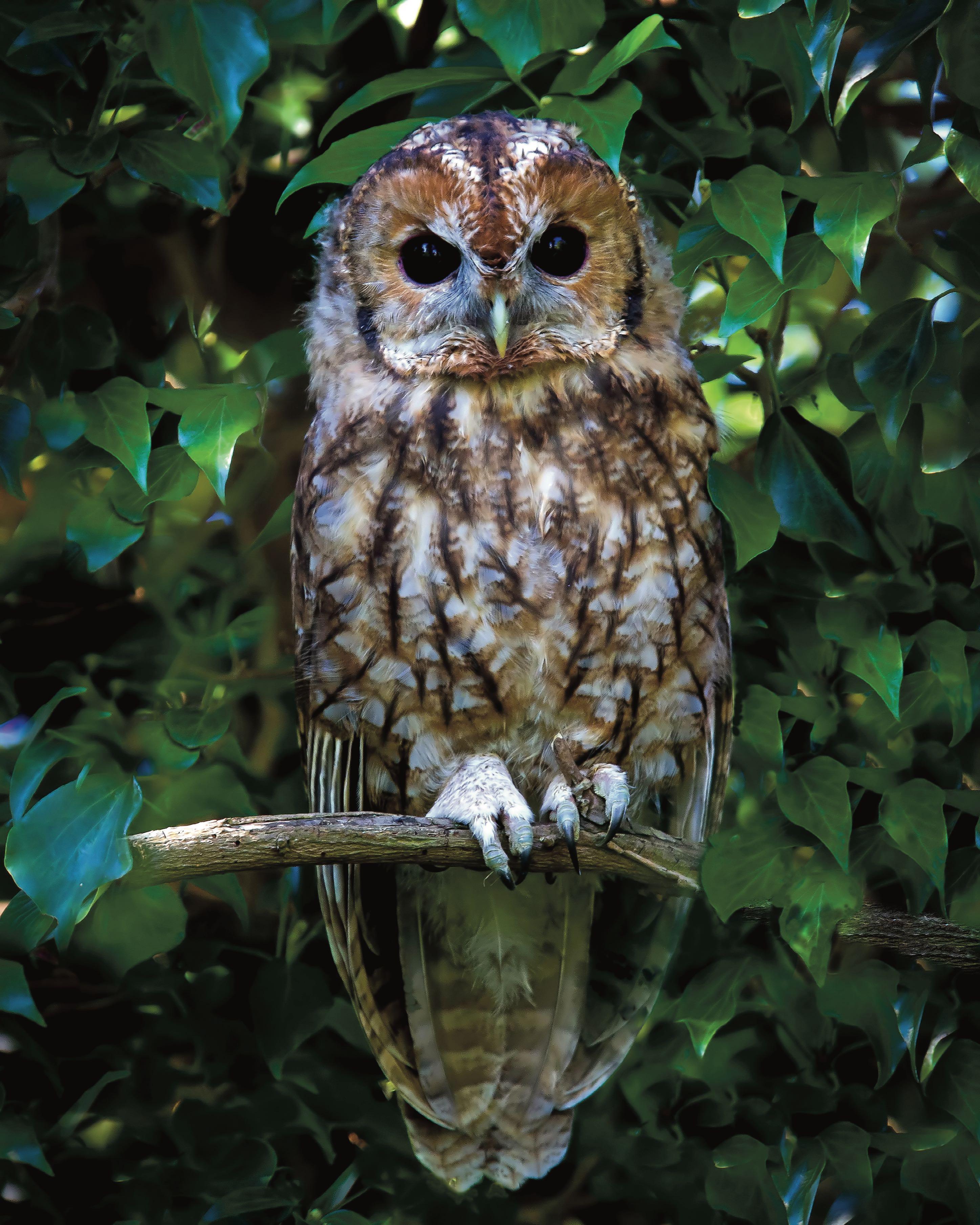
The reintroduction of the Red Kite to England and Scotland has been one of the major conservation success stories of the last 30 years. Roadkill such as Pheasants, rabbits and squirrels form an important part of the diet of kites in England.
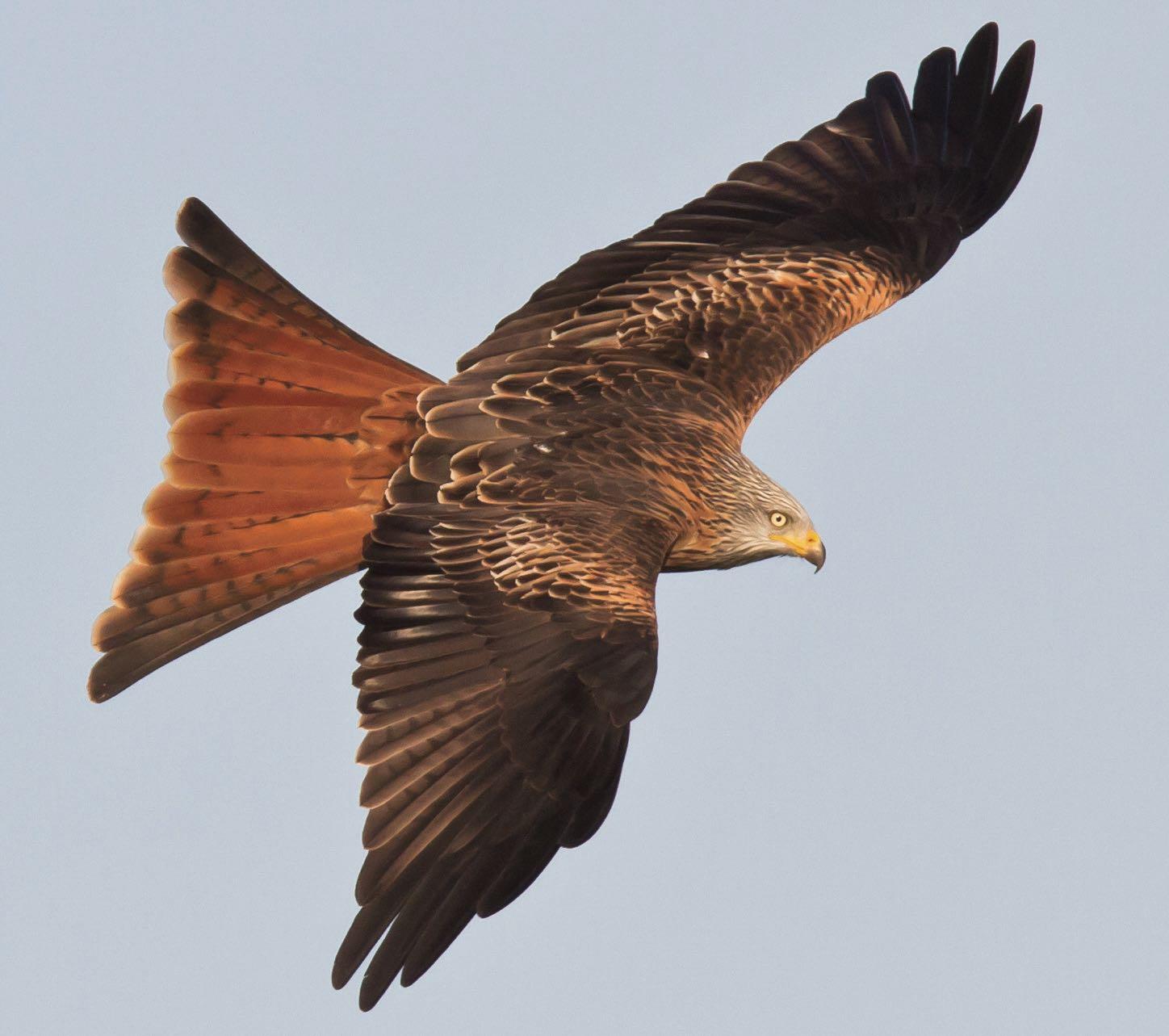

For the first time for 200 years Buzzards now breed in every county in England, Wales and Scotland. It is thought they are now our commonest bird of prey, pushing the Kestrel into second place.
Kestrels hunt both from static perches and by hovering, a feat which gave rise to its country name of ‘windhover’. Vole numbers affect Kestrel numbers: in good vole years more young Kestrels are fledged.
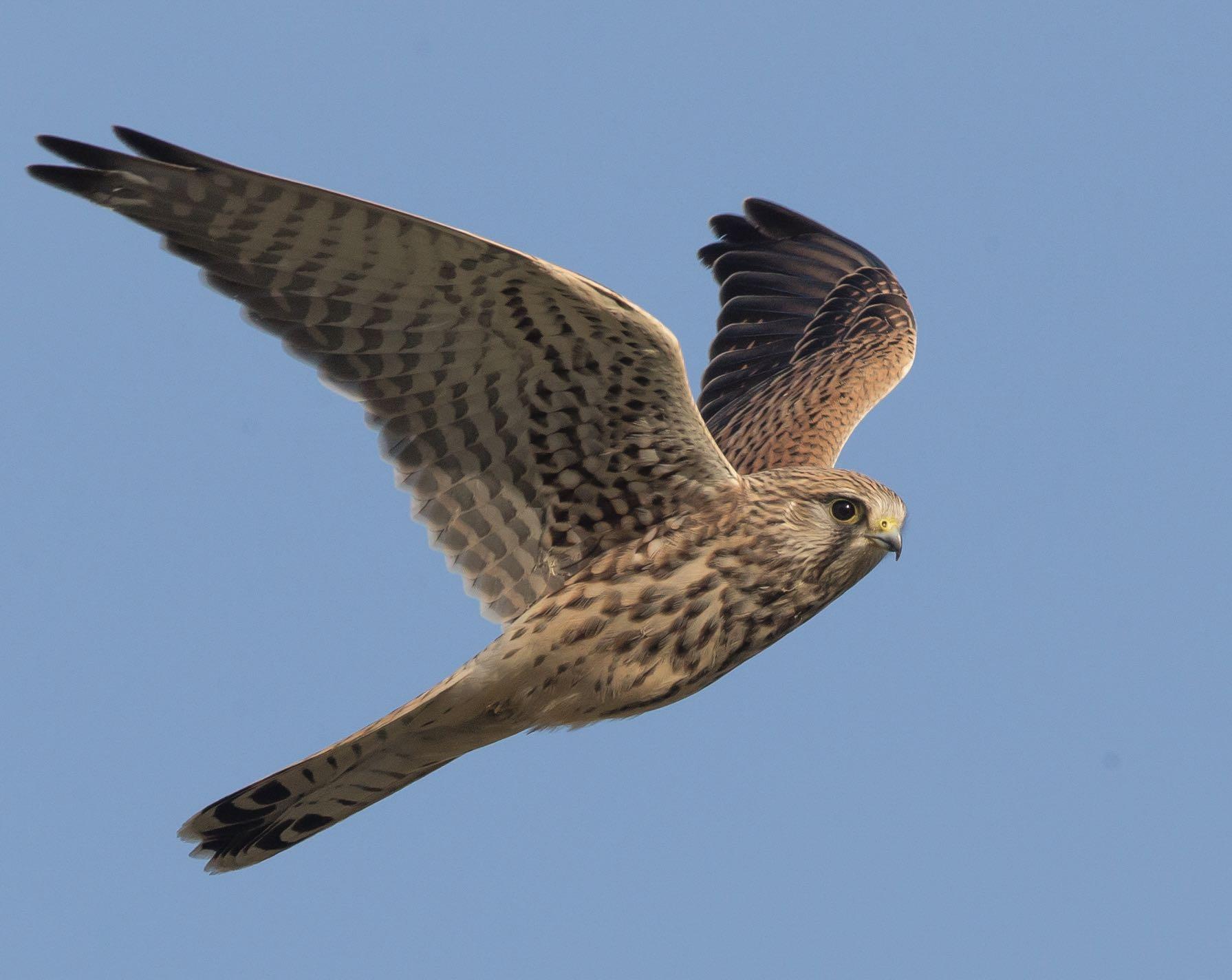
Sparrowhawks are specialist hunters of birds: more than 120 species have been recorded as prey, ranging in size from Goldcrest to Pheasant. Female Sparrowhawks are typically 25% larger than males, but are often twice as heavy.

The Jackdaw has a reputation as a thief, with a liking for shiny objects. They often nest in chimney stacks. ‘Jack’ means small (ie. small crow) and ‘daw’ means knave (someone of a lowly position).
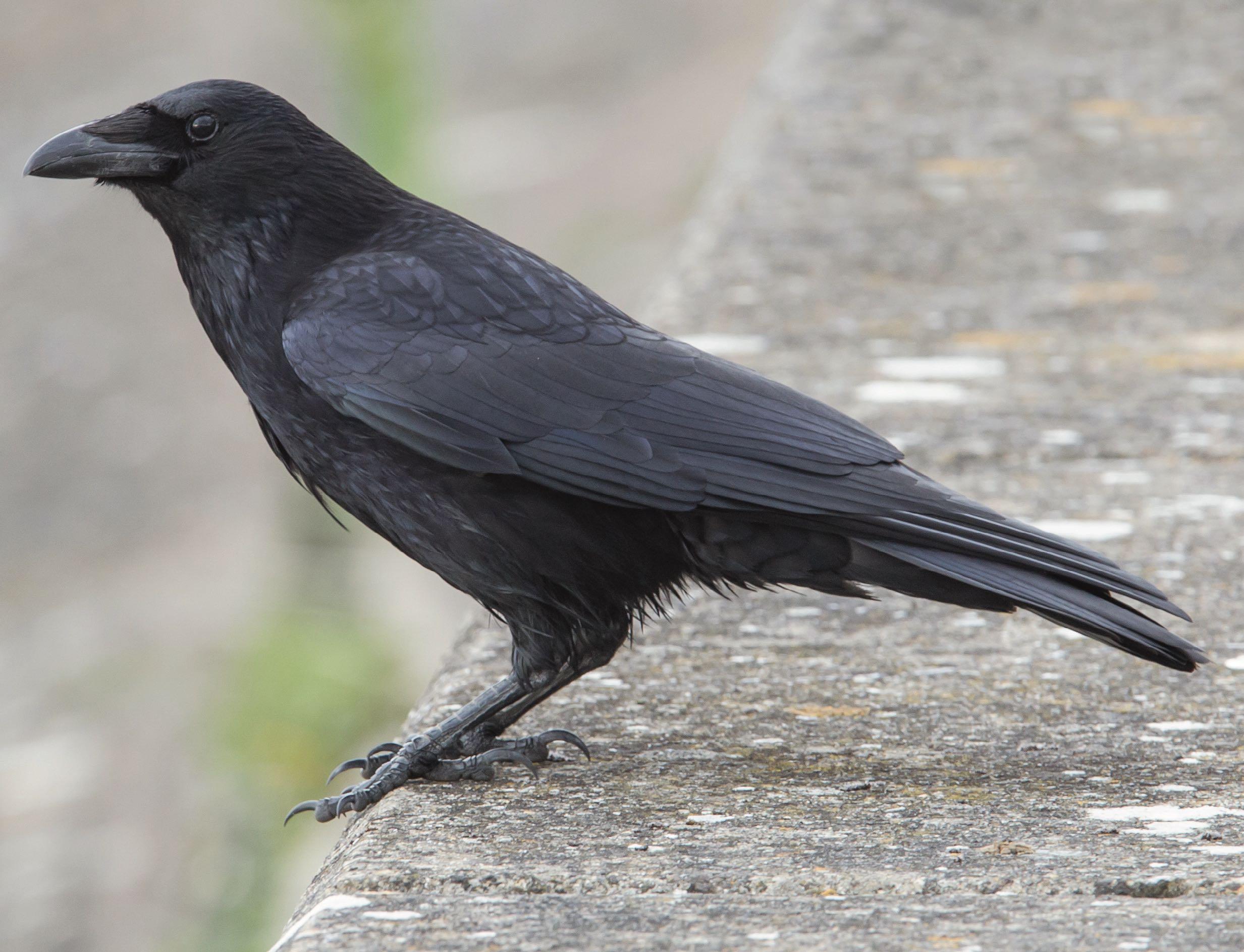
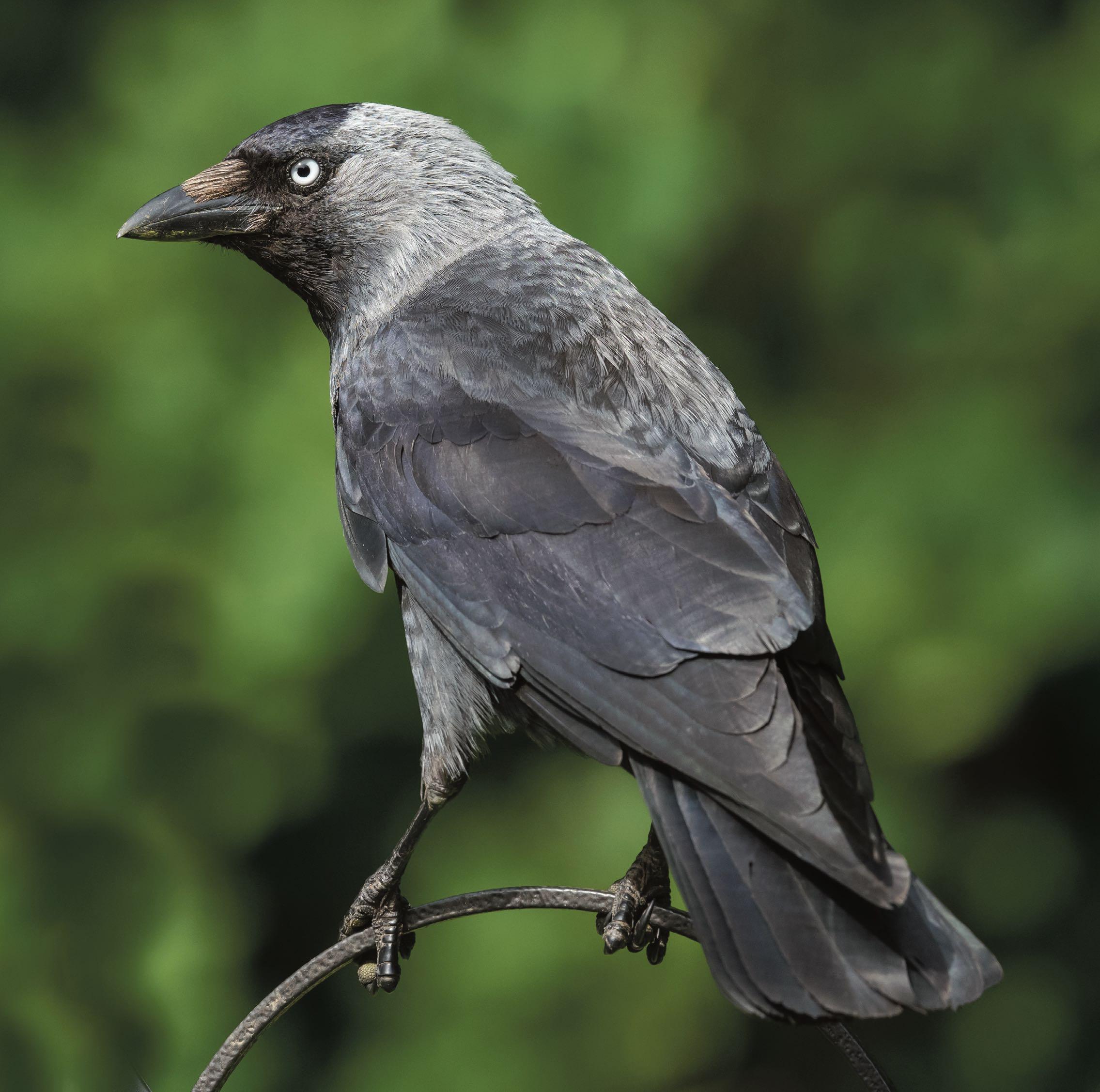
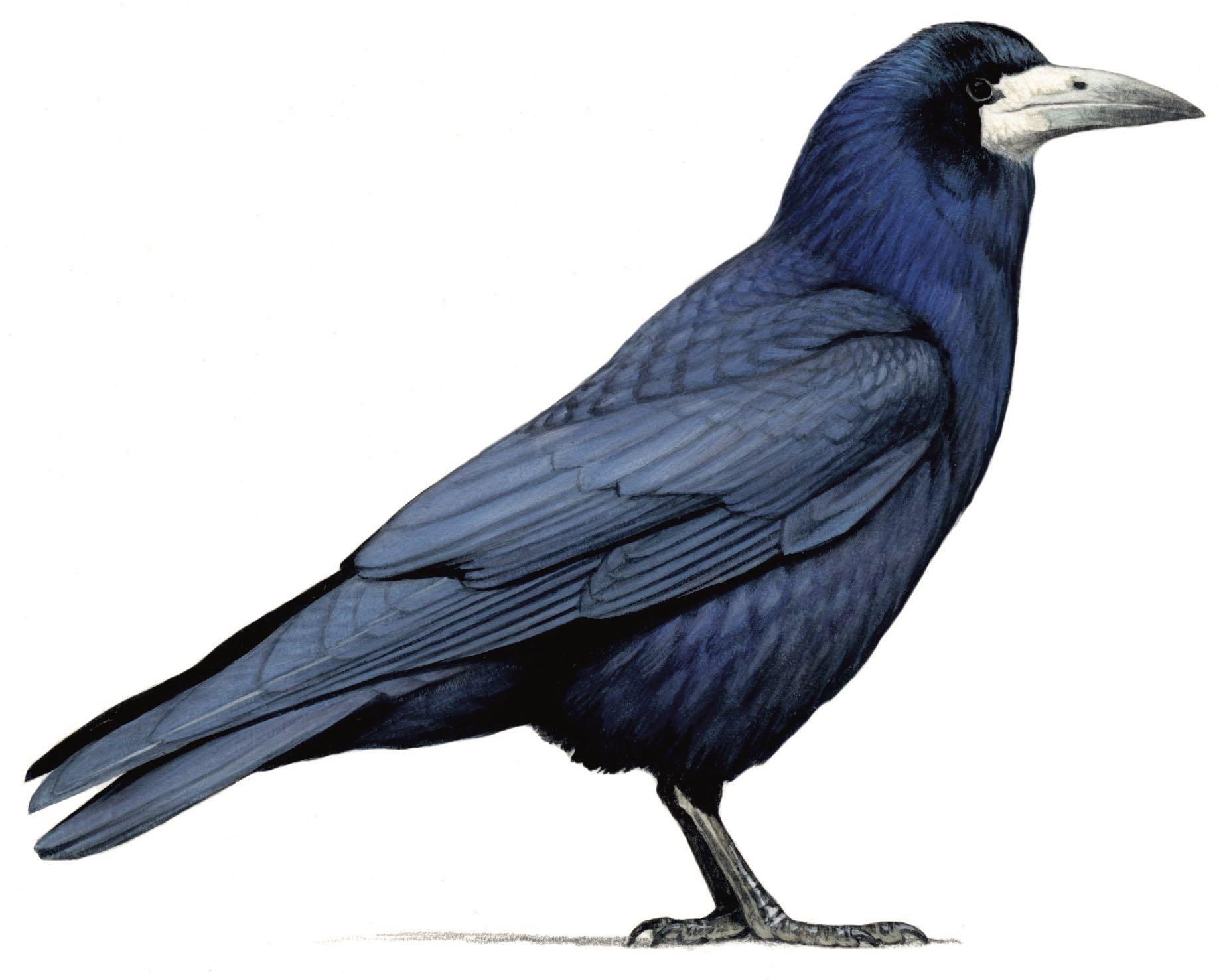
Rooks are far more likely to be seen in groups together than Carrion Crows, and nest together in colonies which are both raucous and messy. In ancient folklore it was said to be a bad omen if a rookery was deserted.
Magpie numbers in Britain and Ireland have quadrupled in the last 35 years. Magpies have always been surrounded by superstition, and there are many versions of the poem that begins: “One for sorrow, two for joy...”
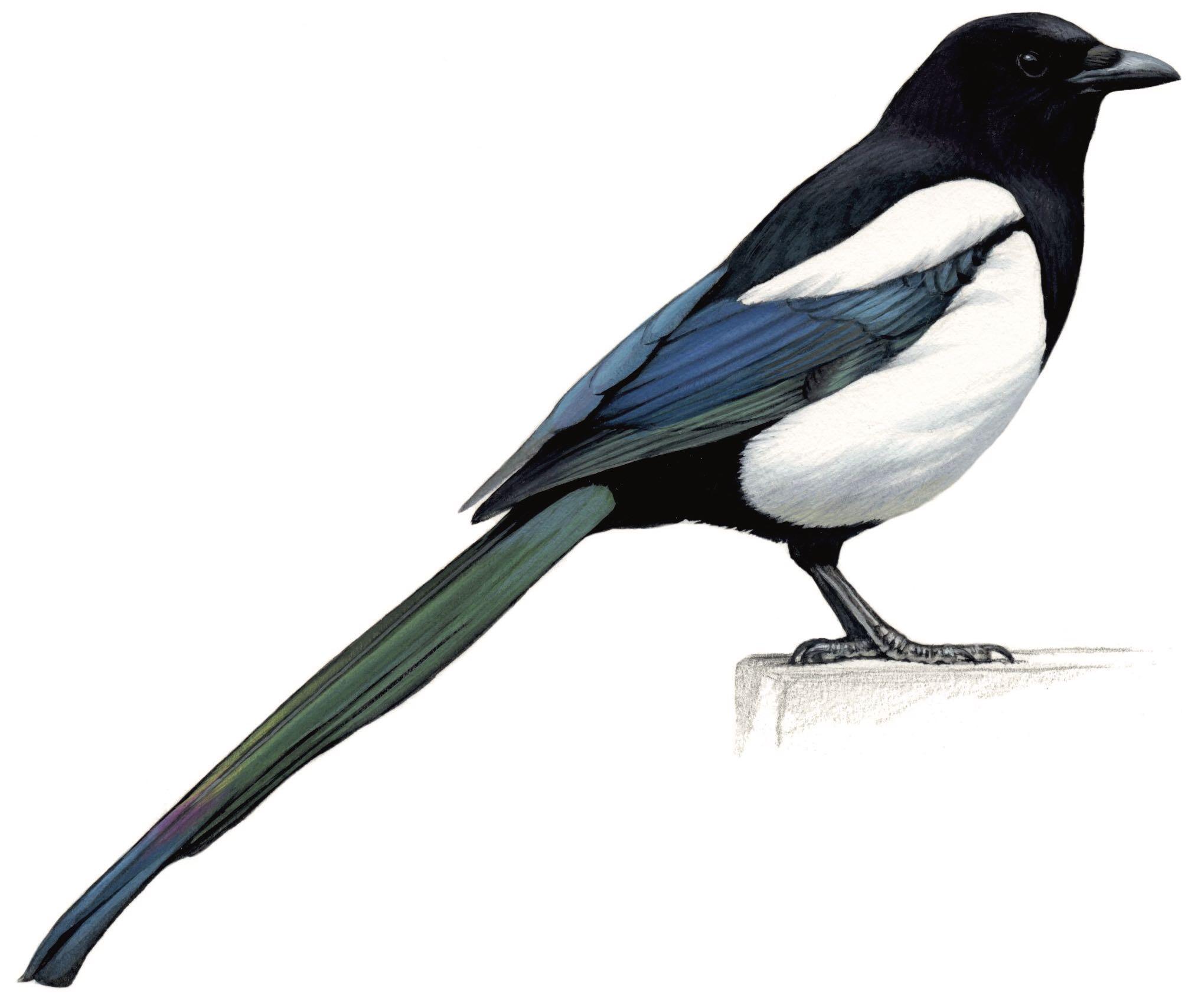
Although Carrion Crows in southern Britain are pure black (without the Rook’s white around the bill), in Scotland and Ireland they are replaced by the half grey, half black Hooded Crow. Its name derives from its principal food source –it is a carrion eater.
Only the female (or duck) makes the familiar quacking. The drake’s call is much softer and quieter. Once all the eggs have hatched the duck leads the brood away to water. They never return to the nest.

Pheasants are not native to Britain: it’s thought that the Romans first brought them here. Pheasants are released in Britain in huge numbers for shooting. The annual release is probably in excess of 20 million birds.


Also known as the French Partridge, as it was first introduced from France to Britain in the 1700s for game shooting. It does sometimes perch in trees, a habit which gave rise to the belief that this bird is the ‘Partridge in a Pear Tree’ in the Christmas rhyme.
Grey Partridge numbers have declined by as much as 80% in the last 30 years. They lay the biggest clutches of any birds, usually 14 to 15 eggs, although even bigger clutches have been recorded.

Grey Herons nest in heronries, mostly in trees, with the majority of nests at least 25m above the ground.

Increasingly heronries also have Little Egrets nesting alongside the herons.
Unlike House Sparrows, both sexes of tree sparrows are identical in appearance, with no seasonal change in plumage. Britain’s Tree Sparrow population is thought to number just 10% of size of the population in the late 1960s.

Because of the high mortality of young, Kingfishers usually have two or three broods a year, with as many as 10 in a brood. In winter a Kingfisher needs to eat around 15 or 16 minnows a day.
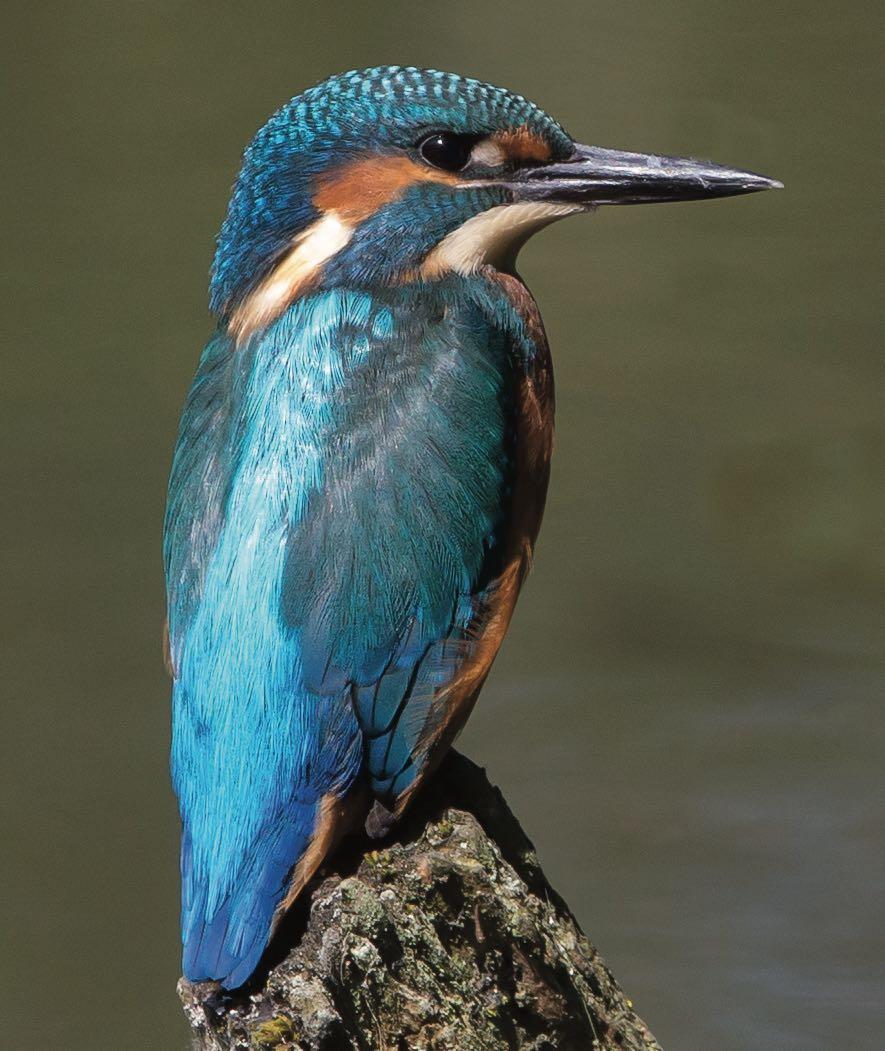
Sometimes female Moorhens lay some of their eggs in another Moorhen’s nest in an attempt to boost their breeding success. Subsequent broods of chicks are often reared with the help of young birds from a previous brood.


The Oxford Ornithological Society welcomes all who have an interest in birds and birdwatching in Oxfordshire, whether young or old, expert or novice. Activities are designed to cater for a range of interests and levels of experience. Indoor meetings are held monthly except during the summer holiday period. The OOS arranges field outings to good birdwatching areas in most months. Members receive a bulletin and an Annual Report, collated from records sent to the County Recorder. www.oos.org.uk email: membership@oos.org.uk

BBOWT works to manage habitats to tackle the nature and climate crises locally, providing vital breathing spaces in a crowded world. We’re restoring nature across these beautiful counties and empowering people to connect with their local wildlife.
Our expert team work with more than 1,700 volunteers to look after 85 nature reserves (including Chimney Meadows near Bampton) and four education centres, run hundreds of amazing events, and campaign to make nature’s recovery a reality. www.bbowt.org.uk info@bbowt.org.uk

Magic Moments With Birds offers dedicated birdwatching outings for those who want to discover more of the superb birdlife of our area and beyond. Whilst based in Oxfordshire (Bampton) and covering many of the best local birdwatching sites, we also aim to go further afield and some of our trips will entail day or half-day excursions. Excursions are aimed at the beginner/intermediate level rather than at the expert. Trips are organised through the website Meetup.com, although private birdwatching groups can also be arranged. www.meetup.com/Magic-Moments-With-Birds email: magicmomentswithbirds@gmail.com
The group's aim is to support actively the work of the RSPB in the local community and to involve RSPB members and the wider in the Society's conservation, public affairs, education, fundraising and other activities. We have regular monthly indoor meetings locally throughout the year and day-trips far and near to sites of interest to birders. www.rspb.org.uk/groups/oxford email: lynebbs22@gmail.com
